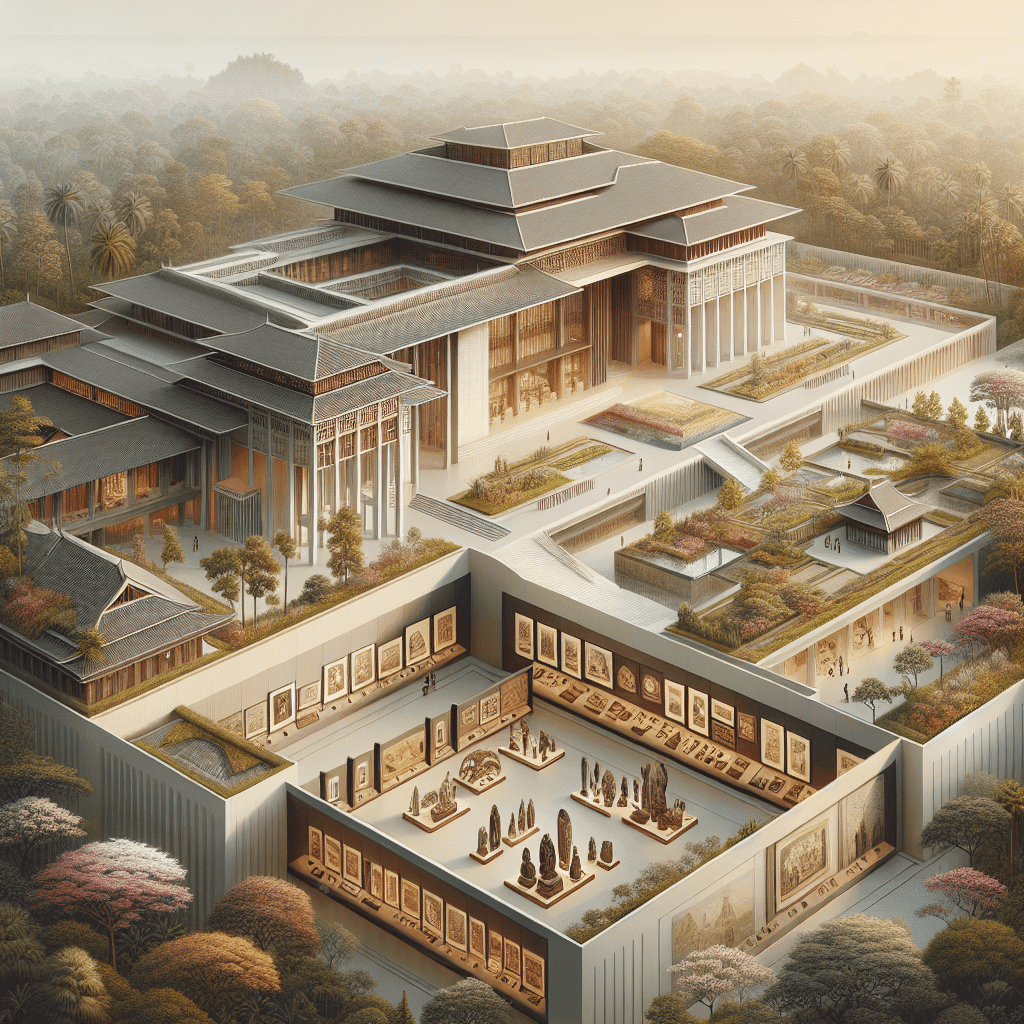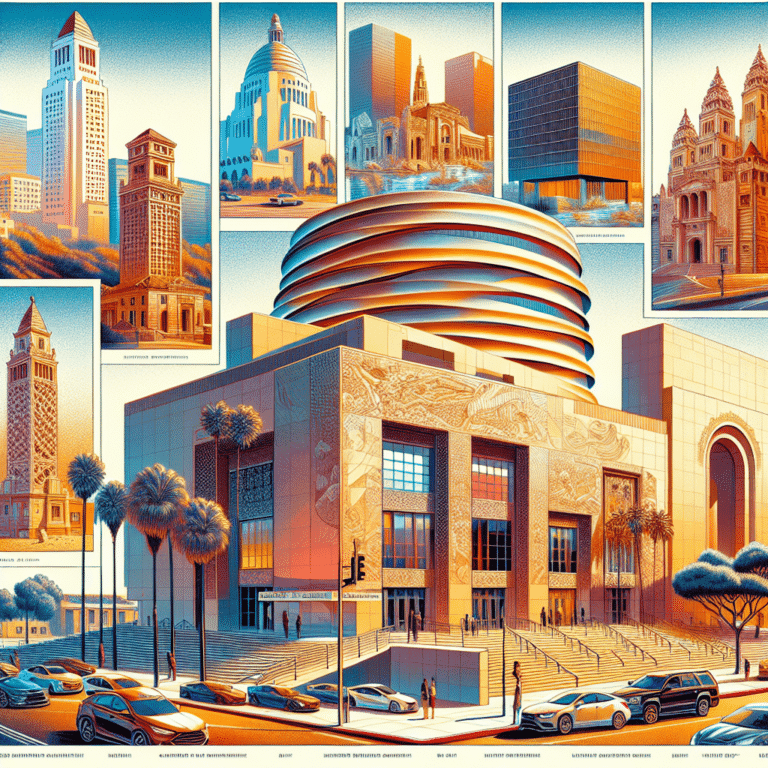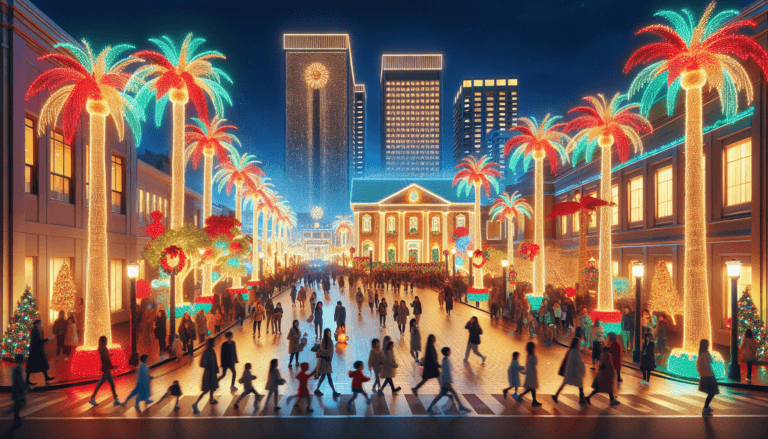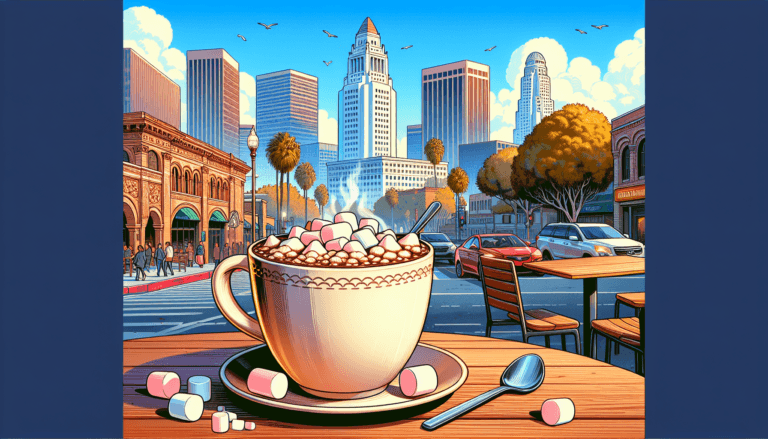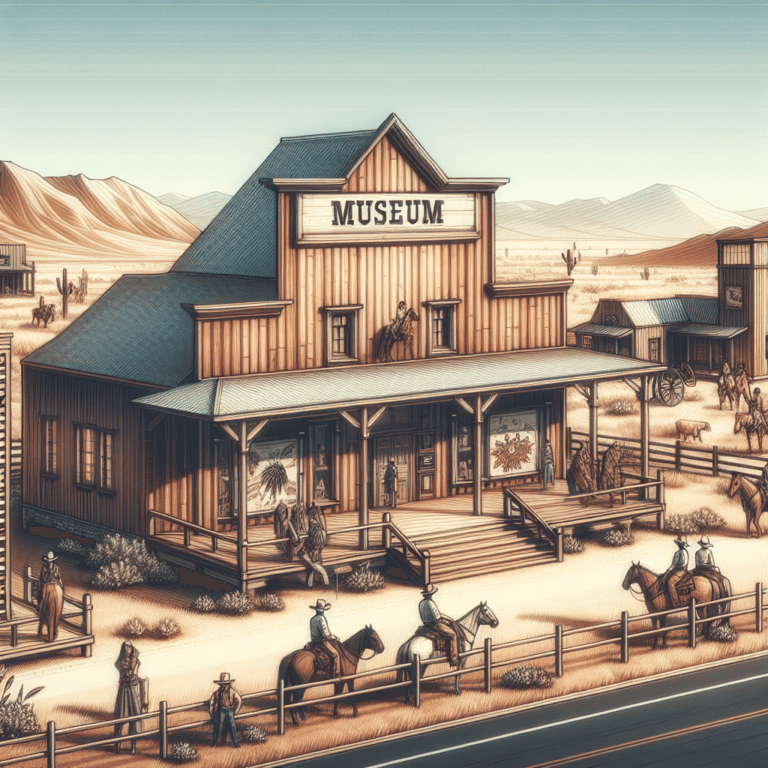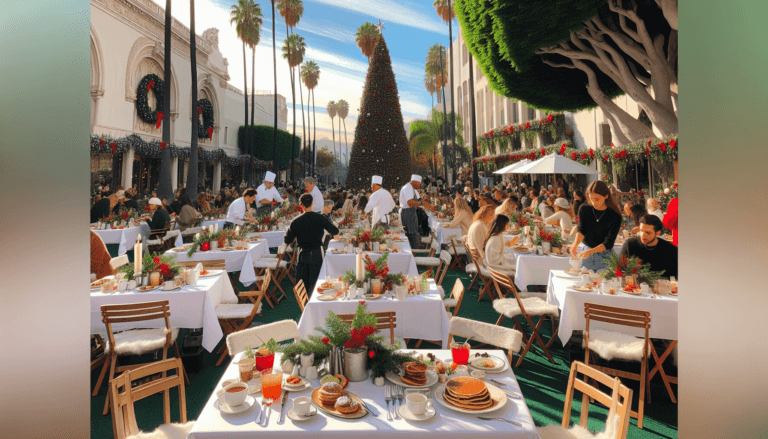Journey through Time: Pacific Asia Museum Beckons!
Discovering Pacific Asia Museum
Rich Cultural Heritage
Visiting the Pacific Asia Museum in Pasadena is an exciting journey into a world of rich cultural heritage. The museum showcases an incredible collection of over 17,000 objects that span 5,000 years of history. I was amazed to learn that this museum houses one of the most comprehensive collections of Asian and Pacific Island art in the world. The breadth of the artifacts, from the Neolithic period to the present day, illustrates the diverse histories and cultures of these regions. The museum began as a small educational space in 1971 and has since grown into a significant cultural resource in Southern California (Pacific Asia Museum).
| Collection Highlights | Number of Objects |
|---|---|
| Total Collection | 17,000+ |
| Time Span | 5,000 years |
| Major Art Regions | East Asia, South Asia, Southeast Asia, Pacific Islands |
Diverse Art Forms
The Pacific Asia Museum is known for its impressive assortment of art forms, including paintings, ceramics, textiles, and sculptures. Each piece tells a story, reflecting the artistic traditions and cultural significance of its origin. I was particularly drawn to the variety of styles and techniques on display, which showcase the deep history and craftsmanship of cultures from Chinese to Japanese and beyond.
The museum is housed in a historic building that resembles the Beijing Temple of Heaven’s Hall of Prayer for Good Harvests, adding to the cultural experience. The architecture itself is a work of art, providing a beautiful backdrop for the diverse exhibitions (Pacific Asia Museum – USC).
For anyone interested in exploring the best museums in Los Angeles, the Pacific Asia Museum is a must-visit destination. It offers an enriching experience that connects visitors to the vibrant artistic traditions and histories of the Asia-Pacific region. For more museum options, check out our list of the best los angeles museums.
Exploring Exhibitions at the Museum
At the Pacific Asia Museum, I can immerse myself in a world of art and history through its fascinating exhibitions. The collections showcase a blend of ancient artifacts and contemporary art, making it a unique destination for anyone interested in exploring the rich cultures of Asia and the Pacific Islands.
Ancient Artifacts
The museum’s collection includes more than 17,000 objects, spanning over 5,000 years of history. This extensive range of artifacts represents cultures from Iran to Japan and from the Himalayas to the Pacific Islands (Pacific Asia Museum). I am always amazed by the ancient artifacts on display, which allow me to connect with the past in a tangible way.
| Type of Artifact | Notable Examples | Historical Significance |
|---|---|---|
| Textiles | Silk robes from the Tang Dynasty | Reflects the trade routes of ancient Asia |
| Ceramics | Ming Dynasty porcelain | Showcases the artistry and innovation of ancient craftsmen |
| Sculptures | Buddhist statues from India | Represents religious and cultural practices |
The museum features galleries dedicated to both permanent and rotating exhibitions, so there’s always something new to discover. I enjoy the guided tours that provide deeper insights into the stories behind these historical treasures.
Contemporary Art
In addition to ancient artifacts, the museum also highlights contemporary art that showcases the evolution of artistic expression in the region. Visitors can explore rotating exhibits that feature modern themes, reflecting current trends and issues in Asian art (Pacific Asia Museum).
The contemporary art section includes a variety of media, from paintings to installations, allowing me to see how traditional techniques have evolved into modern practices.
| Type of Art | Notable Artists | Themes Explored |
|---|---|---|
| Paintings | Ai Weiwei | Political commentary and social issues |
| Installations | Yayoi Kusama | Exploration of infinity and personal experiences |
| Mixed Media | Takashi Murakami | Blending of high and low culture |
This blend of ancient and contemporary art makes the Pacific Asia Museum a vibrant place to visit. I love engaging with the art through workshops and lectures, which enhance my understanding of the cultural contexts behind the works. For anyone looking to explore more amazing museums in Los Angeles, check out our list of the best los angeles museums.
Engaging Programs and Events
The Pacific Asia Museum is not just about the stunning exhibits; it also boasts a variety of engaging programs and events that make my visits even more enjoyable. Whether I am visiting alone or with family, there’s always something exciting happening!
Educational Workshops
One of the highlights for me are the educational workshops offered at the museum. These programs are designed to reach over 25,000 students, teachers, and families each year, making learning fun and interactive (CASE). The workshops align with California’s K-12 education standards, ensuring that participants gain valuable knowledge while enjoying the art and culture of Asia and the Pacific Islands.
| Workshop Type | Age Group | Duration | Frequency |
|---|---|---|---|
| Art Making | All ages | 2 hours | Monthly |
| Cultural Storytelling | K-12 | 1 hour | Weekly |
| History of Asian Art | Adults | 1.5 hours | Bi-monthly |
These workshops allow me to dive deeper into specific themes, such as traditional crafts or contemporary Asian art, and engage with the artworks in a hands-on way.
Community Outreach Initiatives
The Pacific Asia Museum also places a strong emphasis on community outreach initiatives. These programs aim to foster connections among diverse audiences and promote cultural exchange and dialogue. I appreciate how the museum opens its doors to everyone, providing opportunities for various groups to experience the rich cultural heritage represented in the collection.
The museum’s outreach efforts include:
- School Programs: Interactive tours and workshops tailored for local schools.
- Family Days: Special events where families can explore the museum together through activities, performances, and crafts.
- Community Partnerships: Collaborations with local organizations to bring art and culture to underserved communities.
These initiatives create a welcoming environment that encourages learning and appreciation of the art and cultures of Asia and the Pacific Islands (Pacific Asia Museum). I always leave feeling inspired and connected to a larger community.
If you’re interested in exploring more about the events and programs at other museums in Los Angeles, check out our list of best los angeles museums that offer similar enriching experiences!
Unveiling the Museum’s Collection
Visiting the Pacific Asia Museum is like embarking on a vibrant journey through time, where I can immerse myself in a rich tapestry of artistic treasures and historical artifacts. The museum’s extensive collection is truly a sight to behold, and I can’t wait to share what I’ve discovered.
Artistic Treasures
The Pacific Asia Museum boasts a remarkable collection that includes over 15,000 objects, celebrating the artistic expression of various cultures from Iran to Japan and the Himalayas to the Pacific Islands. This collection spans more than 5,000 years of history, showcasing not only traditional art forms but also contemporary creations.
| Type of Art | Number of Objects |
|---|---|
| Paintings | 3,500 |
| Textiles | 2,200 |
| Ceramics | 4,800 |
| Sculptures | 1,500 |
This table highlights the diversity of artistic treasures I can explore at the museum. From exquisite ceramics to intricate textiles, each piece tells a story of the culture and era it represents.
Historical Artifacts
The museum’s collection is rich in historical artifacts that provide insights into the cultures of Asia and the Pacific Islands. The artifacts represent nearly every country in the region and reflect the depth of cultural practices and artistic traditions. I find it fascinating to see items that range from ancient relics to modern pieces, allowing me to understand the evolution of art and culture over time.
Among the highlights are:
- Chinese Ceramics: Renowned for their craftsmanship and beauty.
- Japanese Paintings: Featuring traditional techniques and contemporary styles.
- Korean Textiles: Showcasing intricate designs and vibrant colors.
The Pacific Asia Museum’s focus on the art and culture of Asia truly brings to life the rich history and diverse heritage of the region. This collection not only caters to art lovers like me but also serves as a wonderful educational resource for visitors of all ages.
For a broader exploration of Los Angeles museums, I highly recommend checking out the best los angeles museums. Each visit is a unique experience, filled with learning and inspiration that keeps me coming back for more!
Immersing in Cultural Experiences
Cross-Cultural Understanding
Visiting the Pacific Asia Museum is an incredible opportunity for me to dive deep into the diverse cultures of Asia and the Pacific Islands. The museum not only showcases stunning art but also serves as a bridge for cross-cultural understanding. Through its exhibitions, it promotes dialogue and appreciation of the various cultural practices that exist within these regions. The museum collaborates with community organizations and schools to facilitate this exchange, making learning accessible to all.
I find the rotating exhibits particularly engaging, as they explore contemporary Asian art, historical artifacts, and traditional crafts. Each visit can reveal a new perspective, enriching my understanding of the world around me. The museum actively reaches out to over 25,000 students, teachers, and families annually, providing educational resources aligned with California’s K-12 standards. This makes it a fantastic place for families looking to learn together about the rich tapestry of cultures (Pacific Asia Museum).
Artistic Traditions
Artistic traditions are at the core of the Pacific Asia Museum’s mission. With a collection of over 15,000 objects, I am always amazed by the breadth and depth of artistic expression represented. From paintings to textiles, ceramics, and sculptures, each piece tells a story that reflects the cultural practices of its time (Pacific Asia Museum).
I love that there are opportunities for hands-on engagement through guided tours, workshops, and lectures. These programs not only enhance my appreciation for the artworks but also allow me to learn about the techniques and traditions behind them. The museum’s commitment to promoting artistic traditions helps me and other visitors connect with the past while celebrating the dynamic present of these cultures.
For anyone interested in exploring more about Los Angeles museums, the Pacific Asia Museum is a gem that truly enriches my understanding of art and culture. Don’t forget to check out other fantastic places, like The Getty Center and LACMA, for a complete cultural experience!
Experiencing the Pacific Asia Museum
Visiting the Pacific Asia Museum is an exhilarating journey through history and culture that I cherish every time. The experience is not just about the incredible exhibitions; it’s also about the architectural marvels and the historic significance of the building itself.
Architectural Marvels
The moment I approach the museum, I am greeted by the stunning entrance featuring a stone carving of the Chinese character for “Longevity.” The building is remarkable, adorned with distinctive Chinese imperial yellow roof tiles that transport me to another time. Originally constructed in 1924, the museum is housed in the Grace Nicholson mansion, which draws inspiration from the Beijing Temple of Heaven’s Hall of Prayer for Good Harvests (Pacific Asia Museum).
Inside, the museum underwent extensive seismic retrofitting and preservation efforts to maintain its historic charm while enhancing its resilience against earthquakes. I find it fascinating that this blend of ancient architectural style with modern safety measures creates a unique environment where history is both celebrated and protected.
| Feature | Description |
|---|---|
| Building Style | Inspired by Chinese architecture |
| Year Constructed | 1924 |
| Seismic Upgrades | Yes, for earthquake resilience |
| Notable Entrance | Stone carving of “Longevity” |
Historic Significance
The Pacific Asia Museum became a cultural gem in 1971, showcasing over 17,000 objects in its permanent collection. Each artifact tells a story, and I often find myself lost in the rich narratives of the Asian art forms displayed throughout the galleries. The museum’s garden, designed by Japanese American landscape architect Takeo Uesugi, further enhances the experience, blending Chinese, Japanese, and Korean landscapes inspired by Ming Dynasty scholar gardens in Suzhou, China.
The combination of the historical mansion, the thoughtfully curated exhibits, and the serene garden creates an atmosphere of tranquility and introspection. I always leave feeling inspired and enriched, having connected with cultures that resonate through art and history. For anyone seeking a fun and educational outing in Los Angeles, the Pacific Asia Museum is a must-visit destination that offers an experience unlike any other.
To explore more amazing museums in the area, check out our list of the best los angeles museums.
Special Exhibition: “Our World Is Alive”
Indigenous Australian Art
I am thrilled to share my experience with the exhibition “Our World Is Alive: Artist to Artist” at the Pacific Asia Museum! This showcase celebrates contemporary Indigenous Australian artists, featuring breathtaking works that highlight the significance of family, Country, and cultural continuity. The exhibition includes a variety of art forms, from stunning paintings to four Yidaki (didjeridoos) crafted by the distinguished artist Djambawa Marawili AM, who is well-known for his contributions to Aboriginal culture (Pacific Asia Museum).
| Artwork Type | Notable Features |
|---|---|
| Paintings | Vibrant colors and themes of family and Country |
| Yidaki (Didjeridoos) | Traditional instruments representing cultural heritage |
Visitors can immerse themselves in the deep connections of family and kinship that these artists express through their work. The exhibition is more than just visual art; it is a profound narrative of the rich cultural landscape of Indigenous Australia.
Cultural Continuity
What excites me the most about this exhibition is how it conveys the artists’ strong ties to their culture and heritage. “Our World Is Alive” explores how these themes remain vital and relevant in contemporary art practices. The artworks reflect the ongoing story of Indigenous Australians, demonstrating how their traditions and identities are not only preserved but also evolve through modern expressions.
Additionally, the exhibition features a short film directed by the acclaimed filmmaker Larissa Behrendt. This film provides fascinating insights into the creative processes of the Aboriginal artists, allowing me to better understand their perspectives and the significance of their work (Pacific Asia Museum).
If you are in Los Angeles and looking for a unique cultural experience, I highly recommend visiting the Pacific Asia Museum to explore this exhibition. It’s an opportunity to engage with art that celebrates heritage while showcasing the dynamic nature of Indigenous Australian culture. For more information about other amazing museums in the area, check out our list of the best Los Angeles museums.
Museum’s Garden and Film
Ming Dynasty Inspiration
As I step into the Pacific Asia Museum, I’m immediately captivated by the enchanting garden, which draws its inspiration from the Ming Dynasty scholar gardens of Suzhou, China. This beautiful space is a harmonious blend of Chinese, Japanese, and Korean landscapes, meticulously designed by Takeo Uesugi, a talented Japanese American landscape architect. The garden not only provides a serene escape from the bustling city but also serves as an immersive experience reflecting the artistic and philosophical ideals of East Asian culture.
The entrance to the museum features a stunning stone carving of the Chinese character for “Longevity,” symbolizing the importance of life and wisdom in Asian traditions. The building itself is a visual delight, showcasing distinctive Chinese imperial yellow roof tiles that add to its cultural significance. The garden’s design encourages visitors to engage with nature while reflecting on the rich history contained within the museum’s walls. For more insights into the museum’s architecture and garden, check out the Pacific Asia Museum.
Artistic Insights
The Pacific Asia Museum is not just a place for viewing art; it’s a vibrant hub for understanding the narratives behind the pieces. One of my favorite aspects is how the museum collaborates with artists, scholars, and collectors to curate exhibitions that illuminate the diverse cultures and artistic traditions of Asia and the Pacific Islands. This approach fosters a deeper cross-cultural understanding, inviting visitors to appreciate the societal issues and heritage that shape these communities.
Through various exhibitions, I’ve had the chance to explore a range of artistic expressions, from ancient artifacts to contemporary works. Each piece tells a story, whether it’s a historical artifact that connects me to the past or a modern artwork that challenges my perceptions. The museum’s dedication to sharing these insights enhances my experience and allows me to leave with a greater appreciation for the cultural richness of the region. If you’re exploring the best museums in Los Angeles, the Pacific Asia Museum promises an unforgettable journey through art and history.
For further exploration of Los Angeles’s vibrant art scene, consider visiting other remarkable places like The Getty Center or Los Angeles County Museum of Art (LACMA).

